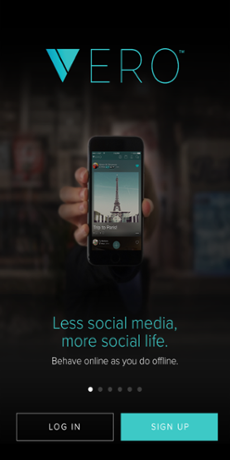— April 7, 2018
It’s hard to keep up with (and I say this as a millennial) all the new social networks popping up – and even harder to learn how to use them personally or for work. So, when I started hearing murmurings about Vero, I was curious, but remained skeptical.

Vero has been around since 2015, though it saw a huge jump in users at the end of February this year as frustrations with the other major social networks grew.
It positions itself as the antithesis to other networks. Vero uses a chronological, algorithm-free timeline, making frustrated Instagram and Facebook users happy. It also has clearly stated minimal data collection practices, unlike Facebook (the Cambridge Analytica nightmare is only the most recent story of Facebook’s data and security practices). Most importantly, its business model is not based on ad revenue, which should mean network design should be focused on users, not advertisers.
“As a subscription-based service, our users are our customers, not the product we sell to advertisers. Our subscription model will allow us to keep Vero advertising-free, and to focus solely on delivering the best social experience instead of trying to find new ways to monetize our users’ behavior or tricking them back into the app with notifications.”
It’s part photo sharing and part recommendation engine. Anything users share on their profile – images, links, music, movies, books, places and more – is categorized into collections. Businesses can still have a presence on Vero, and the app charges them when they sell products through a “buy now” feature on the app rather than pushing ads to the top of the update stream.
Already, the app has attracted creative types and brands such as Zack Snyder, Max Joseph, Rita Ora, Goop and British GQ, along with a million-plus other users. (It extended its free-for-life offer beyond the first million users while it works out performance issues from the influx of new users.)
Vero wants to go back to the idea of instant connection and community on social networks, and promises “less social media, more social life,” telling users to “behave online as you do offline.” Which is still wise advice for anyone, Vero user or not.
It allows you to easily – much more easily than on Facebook, which sort of allows you to do the same – set connections based on your “friend level:” close friend, friend or acquaintance. You then choose which groups can view each of your posts, the idea being that you share different information with different levels of people in real life, why not extend that to digital life as well?
But: we’ve heard this story before. Most social networks start out promising a different experience, and few offer ads at their outsets. Vero has been vocal about its plan to charge future members a subscription fee, so maybe there is hope it will have a different feel.
If Vero can pull it off – users are still growing and a subscription fee has yet to be implemented – you can color me surprised. It has the chance to be one of the only, if not the only, social networks that prioritizes users’ needs and experience over ad revenues.
Digital & Social Articles on Business 2 Community
(46)








